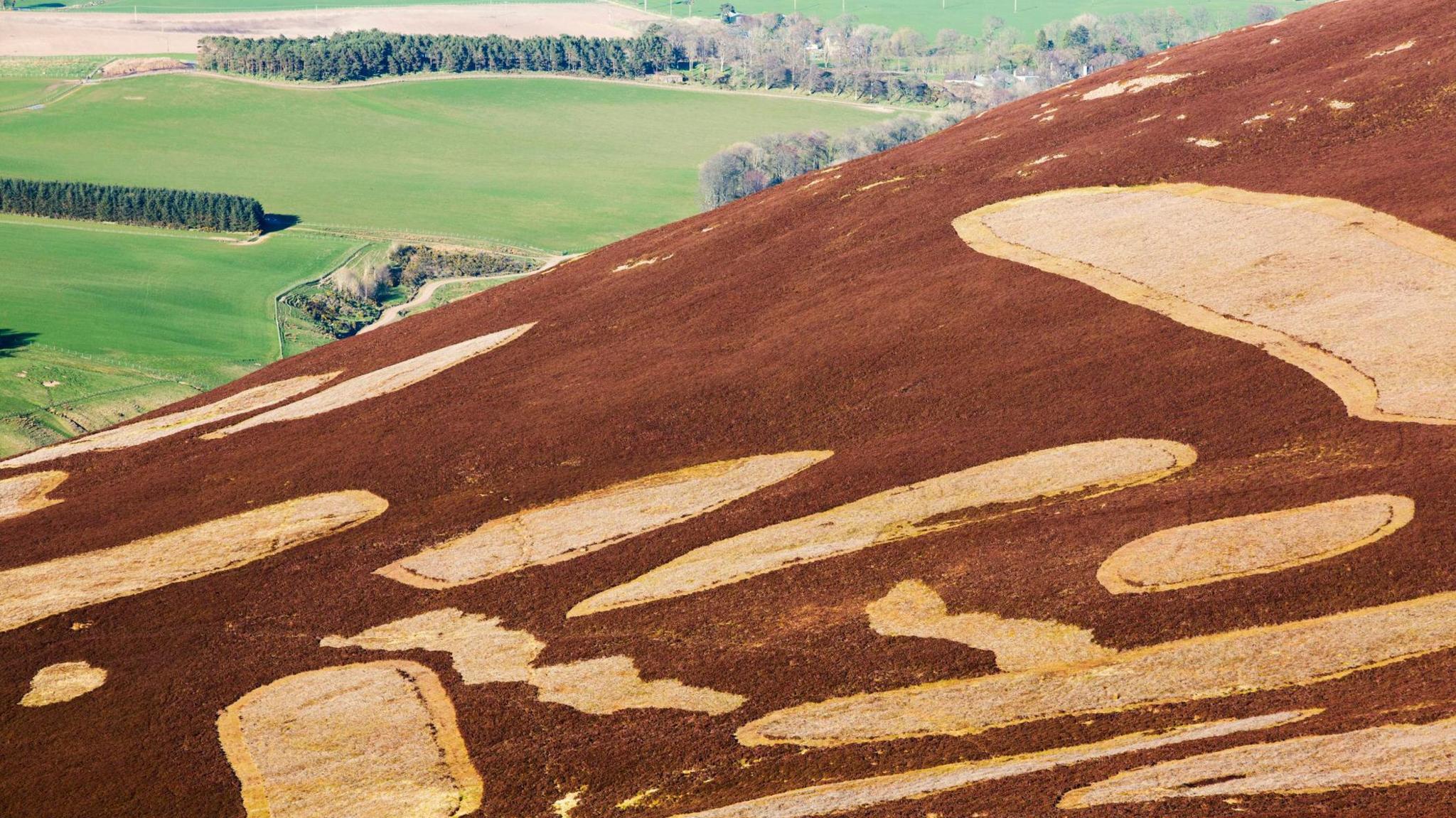Fears thousands of animals died in 'biblical' wildfires
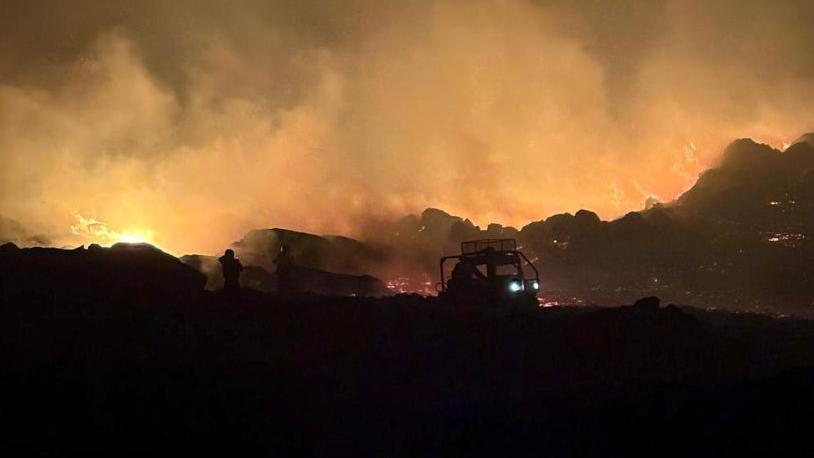
Summer wildfires caused widespread devastation in parts of Scotland
- Published
Summer wildfires described as the worst in Scotland's history likely killed thousands of animals, according to an expert who helped fight the flames.
The fires burned across more than 11,000 hectares (27,000 acres) at Carrbridge and Dava in the north of Scotland in late June and early July.
Colin McClean, land manager of the Cairngorms National Park Authority, told BBC Scotland's Landward programme the fire would have a lasting impact on the environment.
Curlew and grouse chicks would have been among the birds unable to escape the flames, while hares would also have fallen victim to the blaze.
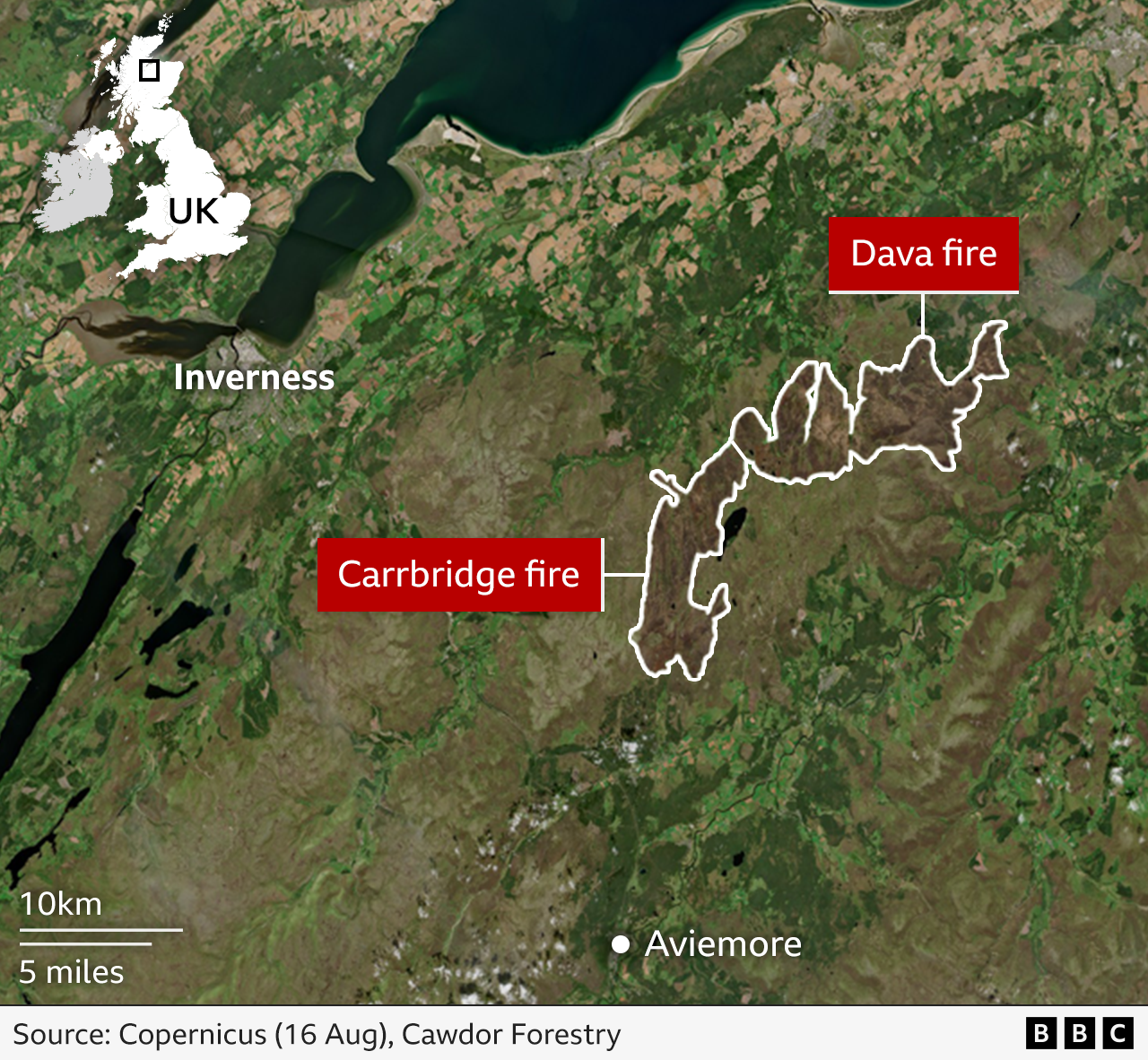
Mr McClean was one of the many people drafted in to try to help tackle the fires.
"I've helped in a lot of wildfires in the past - but I've never seen anything on this scale," he recalled.
"It was quite scary really, the power and ferocity of a fire of this size.
"This is the biggest wildfire that has been recorded in living memory in Scotland."
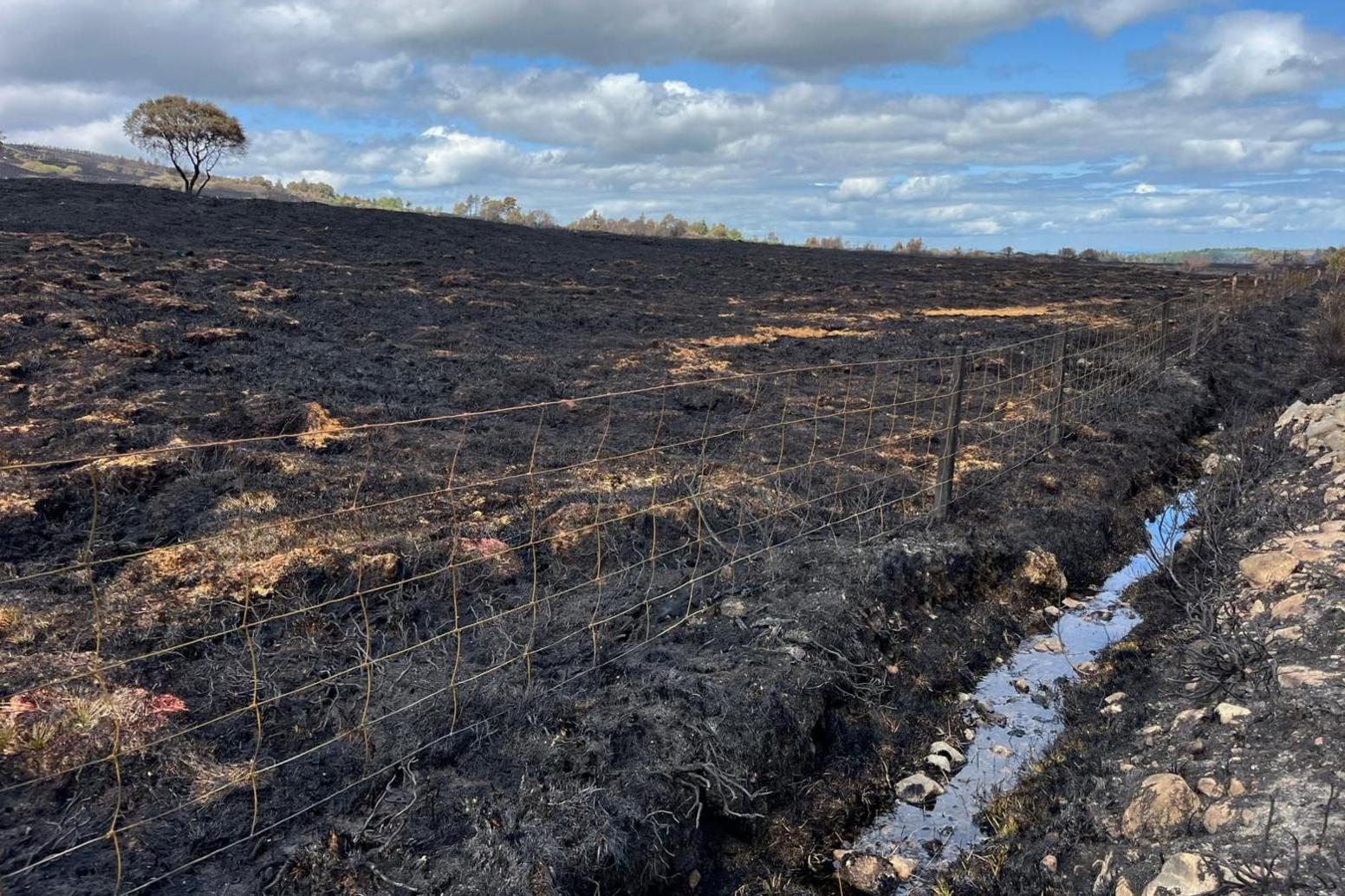
The aftermath of the wildfire at Dava
There were reports of smoke from the wildfire near Carrbridge drifting for 40 miles (64km) across the Moray Firth.
Residents in Orkney also reported smelling smoke carried miles north on the wind, while the sky in parts of the country were tinged orange at dawn and dusk.
Meanwhile in the immediate vicinity of the fire, roads were closed and people were told to keep windows of homes and businesses closed due to smoke.
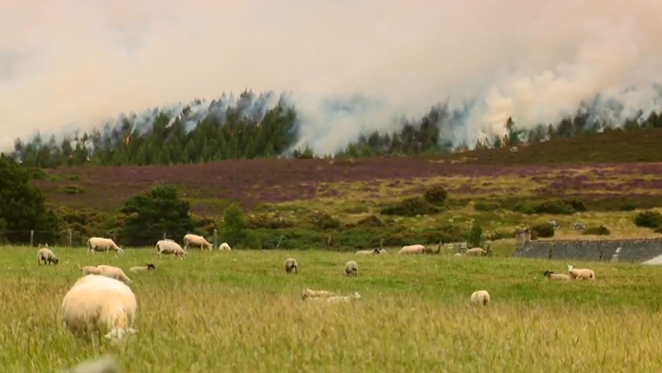
The wildfires burned for days in June and July
Now the impact of the fires can still be seen for miles around from height, but it can also be seen up close too.
Small piles of bones starkly show the impact on wildlife, as well as on the ground itself.
One particular collection of bones he described as probably being that of a leveret (a young hare).
"It probably sat tight for too long, because that's their instinct to do that when danger comes," he said.
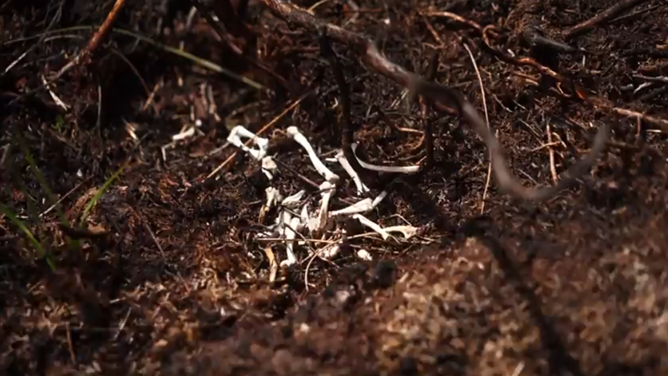
Animal bones were found in the aftermath of the fires
"They just sit in front of the flames unfortunately and perish.
"That must have happened to thousands of animals in a fire of this scale."
Hares would have not been the only victims.
"As a result of this fire we'll have lost curlews, black grouse, red grouse, all those chicks will have gone," Mr McClean said.
He explained that a wide range of plant species were also affected.
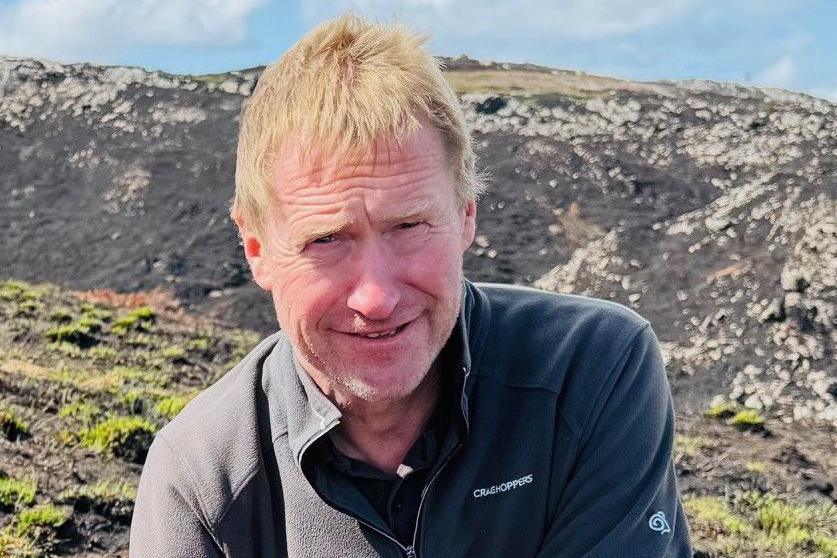
Colin McClean described the power of the fires as "scary"
Two months later, grass is coming back through the charred ground, and heather is also expected to recover relatively quickly.
In some areas the fire swept through swiftly.
However, in the other parts, the fire penetrated deeper, burning away peat which would have formed thousands of years ago.
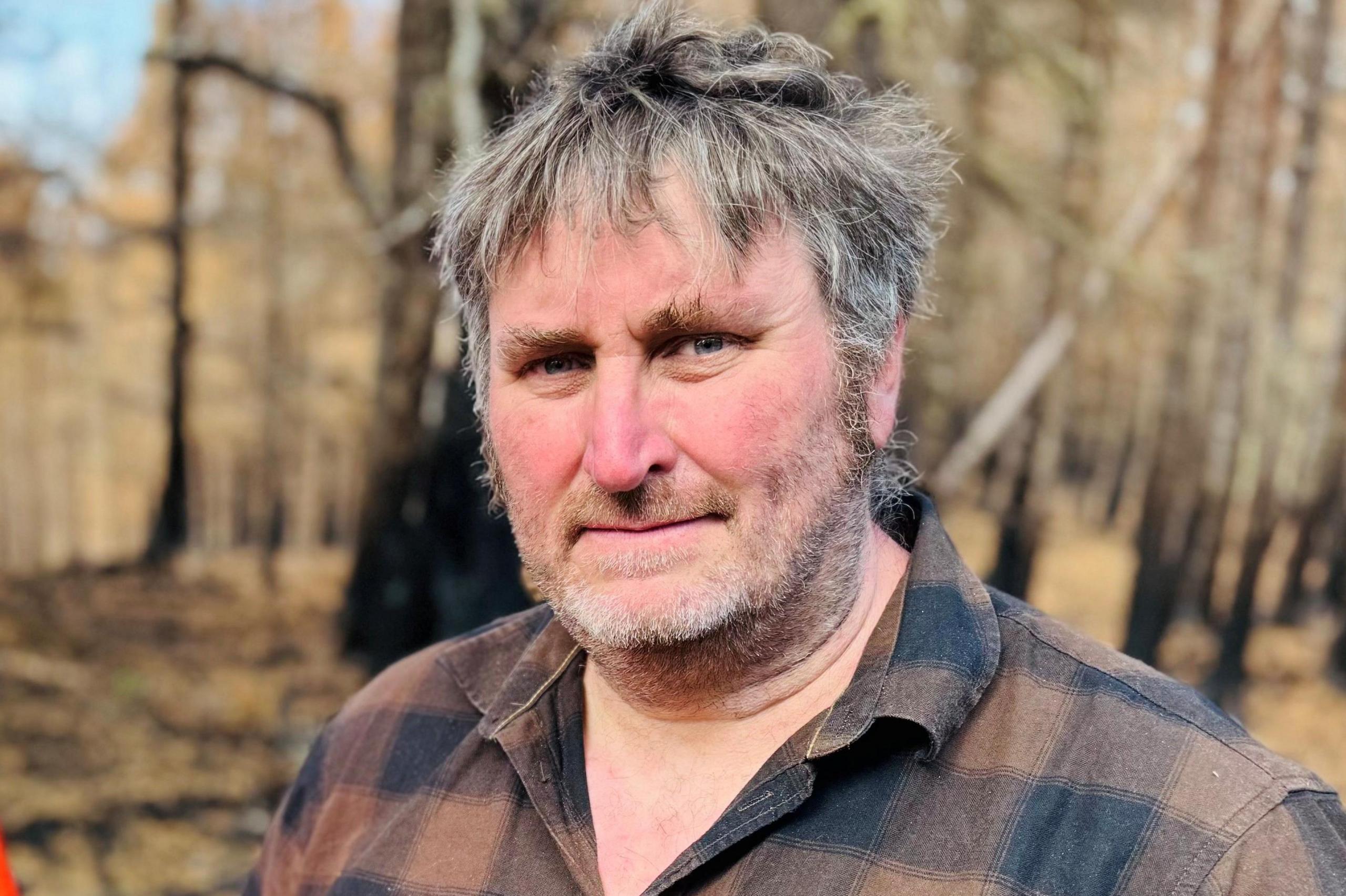
Ben Clinch said hundreds of hectares of Scots pine were lost to the fires
Moorland was not the only casualty.
Ben Clinch is a woodlands manager on a Moray estate, who witnessed the flames approaching first hand.
"Two fires converged, it was just like a biblical scene, the fire jumped over the road," he said.
Landward
Shahbaz is in Moray to see the aftermath of Scotland's biggest wildfire.
Watch on BBC Scotland at 20:30 on Thursday, on BBC One Scotland at 19:30 on Friday, or on BBC iPlayer.
He estimates about 200 hectares (500 acres) of Scots pine was lost there alone.
Many of the trees - a natural habitat for wildlife - are blackened or have fallen over.
The hope is enough trees have survived to be able to shed seed on the area and then regenerate.
What causes wildfires?
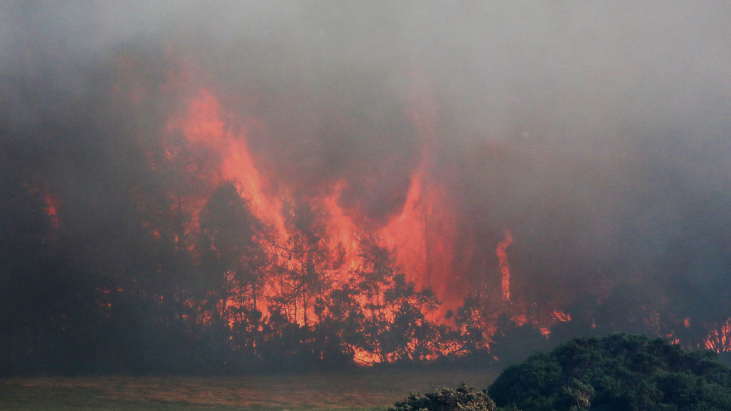
Fires broke out in the Dava area in June
The fire service classifies wildfires as large and uncontrolled outdoor fires exceeding 1,000 sq m of burned area.
These fires are unplanned and unpredictable.
They happen in areas with combustible vegetation that can fuel rapid spread.
Human activity is often to blame, with the fires being started by barbecues, glass bottles magnifying sunlight on dry vegetation, or discarded cigarettes.
One of the reasons fires continue to burn on moorland is because of peaty soil which fuels the flames.
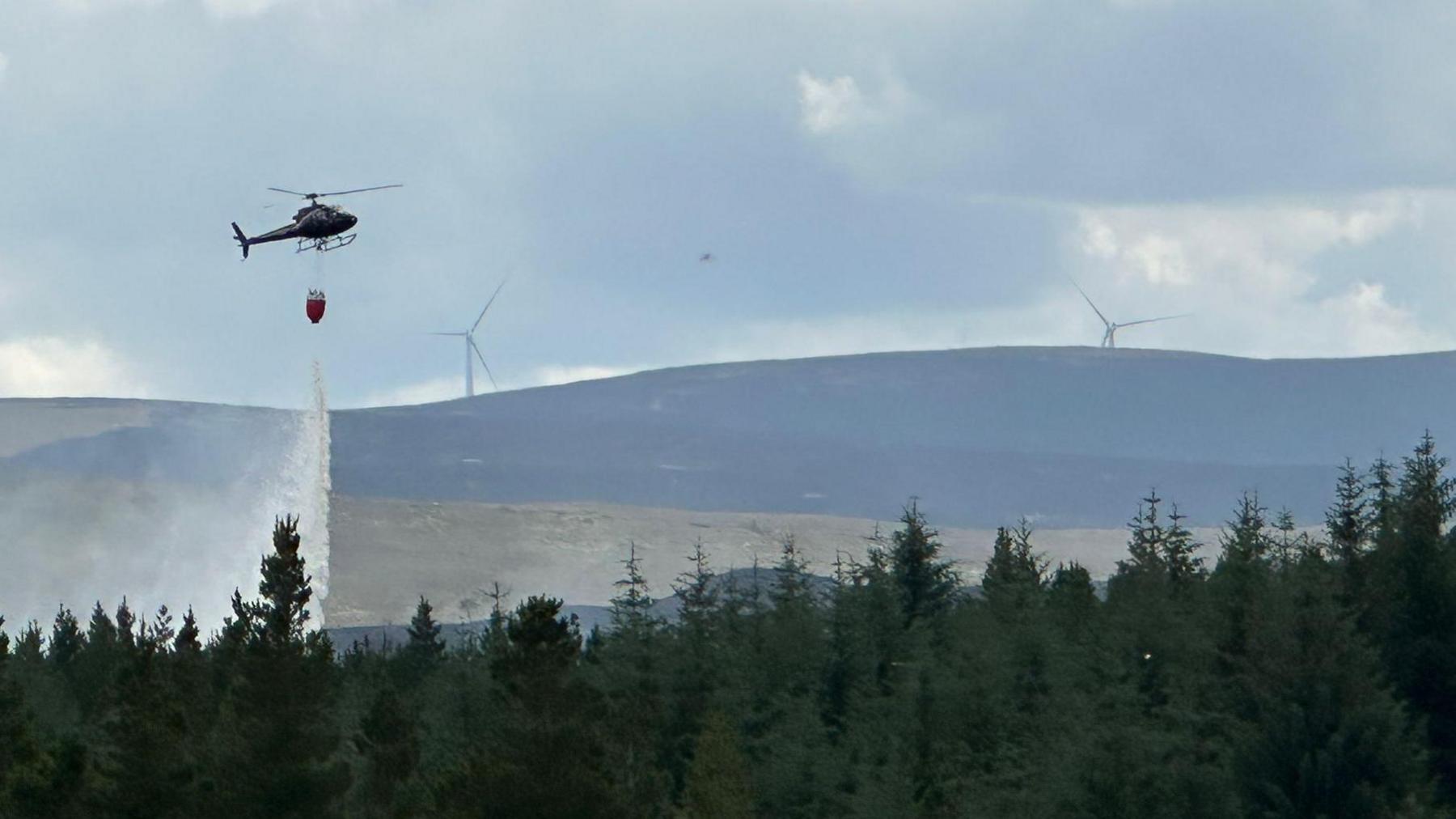
A helicopter was used to waterbomb pockets of the fire
Meanwhile, it has been announced SLE is to administer grant funding from the CNPA to replace equipment damaged during efforts to combat the wildfires in Carrbridge and Dava.
All-terrain vehicles (ATVs), tractors and diggers were among the resources deployed.
An initial fund of £10,000 has been established to contribute towards the cost.
Ross Ewing, director of moorland at SLE, said: "The scale of these fires is unprecedented, and we commend all those who rushed to the scene, risking their own safety, to bring the fires under control.
"It is absolutely vital to replace damaged equipment in order to be ready for future wildfires, which are sadly becoming more common."
Related topics
- Published17 July
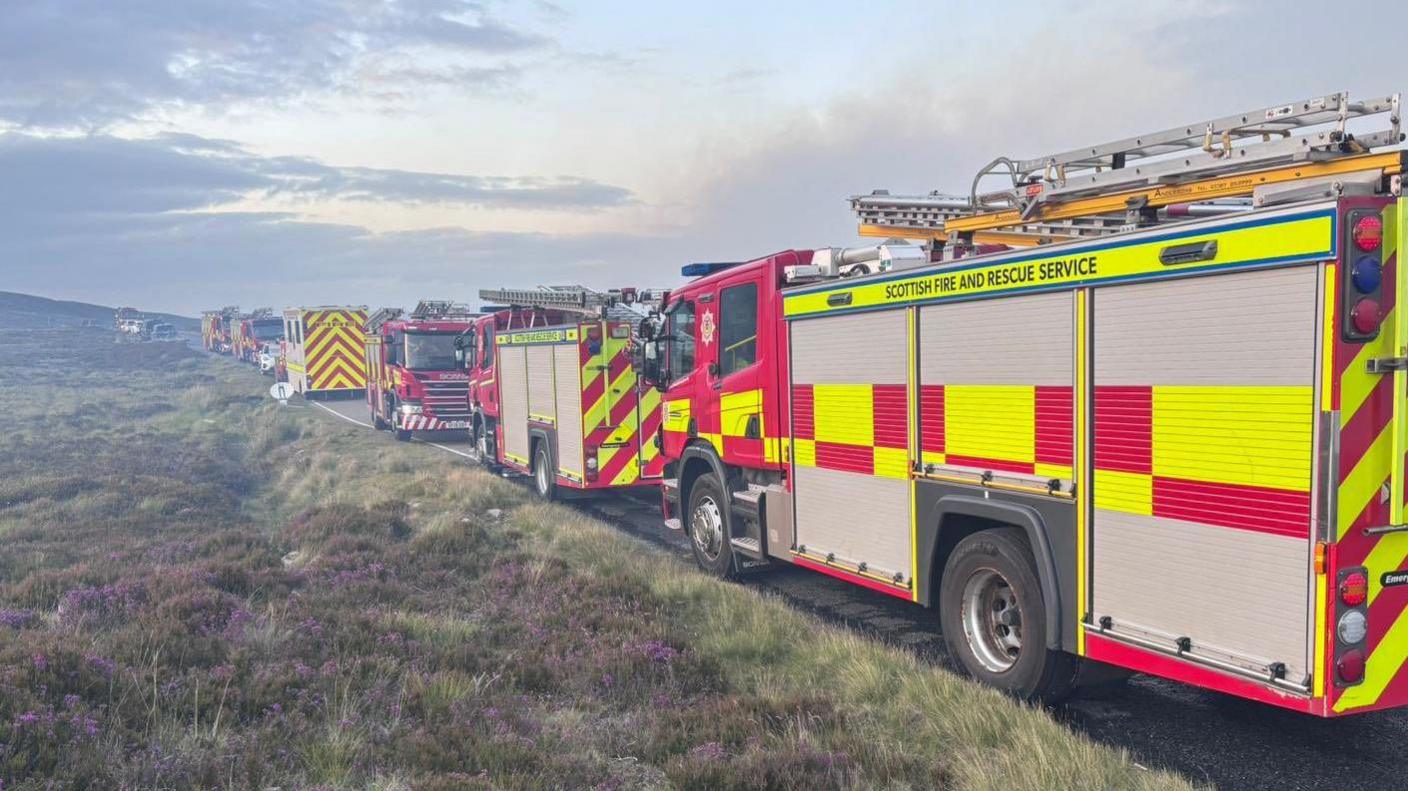
- Published10 July
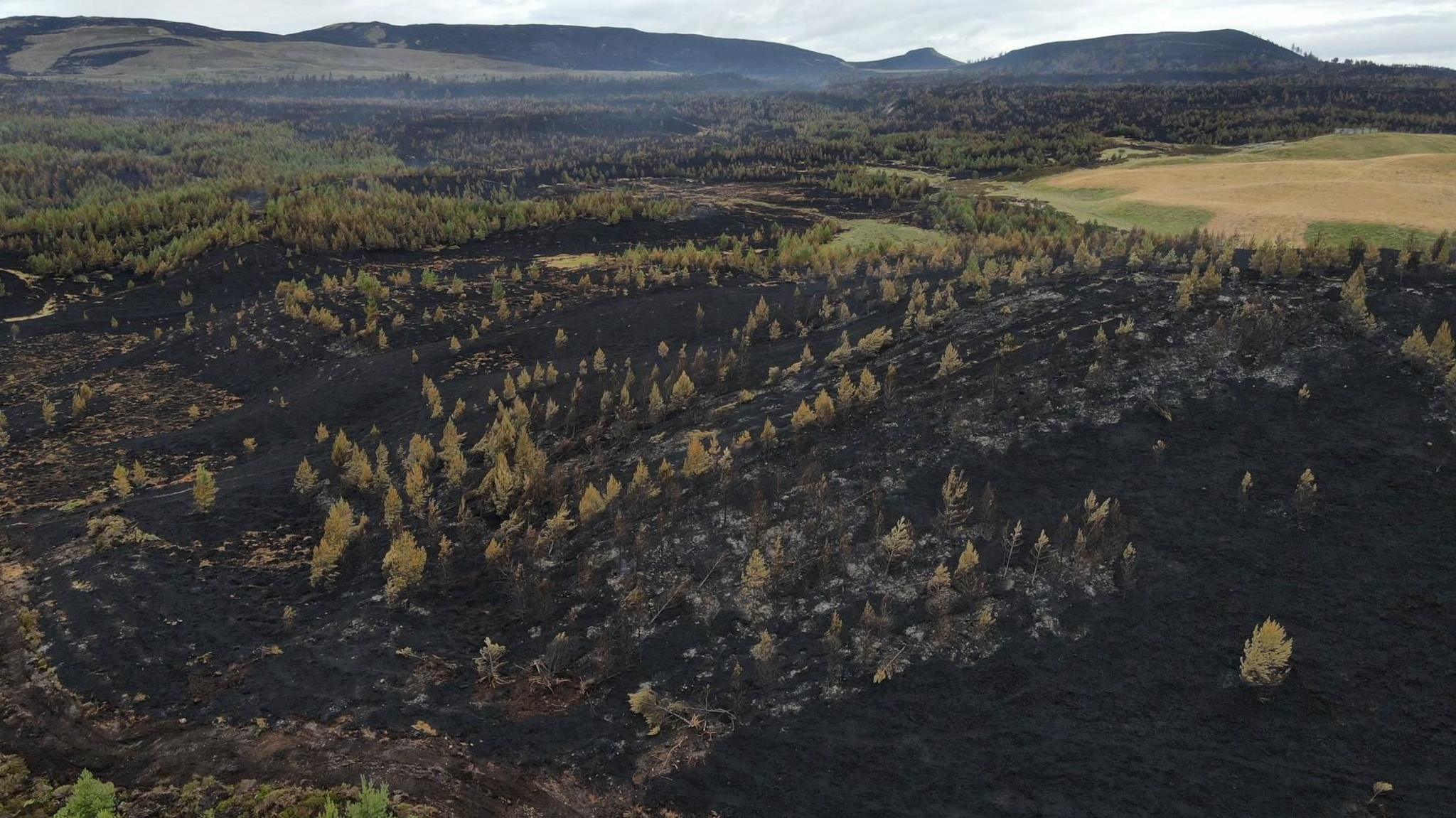
- Published18 April
